KAZ-NK: active defense systems for surface ships
In the previous article Air defense active protection complexes We considered the possibility of creating promising last-mile defense systems, that is, in fact, ultra-short-range air defense systems, where not only missiles, but also artillery systems based on rapid-fire automatic cannons are ineffective.
But threat of an attack with a large number of high-precision weapons, exceeding the capabilities of modern air defense systems, exists not only for terrestrial objects. Based on the KAZ-Air Defense concept for fleet highly effective means of protection against massive attacks by high-precision weapons (WTO).
In order to avoid misunderstanding, let us clarify that, in fact, the considered KAZ are air defense systems of the super-close line of defense. The concept of "KAZ" is used as a distinctive feature to designate this class of weapons, and also because of the similarity of the proposed principles of work with the work of active protection systems for armored vehicles.
Why not high-speed automatic cannons?
The effectiveness of small-bore automatic cannons, as a means of self-defense of surface ships (NK) from anti-ship missiles (ASM), is sometimes questioned. Information on this matter differs, so let's assume that this is not the case.
But it cannot be denied that anti-aircraft artillery systems (ZAK), like anti-aircraft missile systems (SAM), will have a certain minimum range of destruction, depending on the speed and angles of approach of anti-ship missiles to the protected ship. That is, next to the NK there is a dead zone of several hundred meters, in which the defeat of anti-ship missiles by existing means of self-defense is difficult or even impossible.
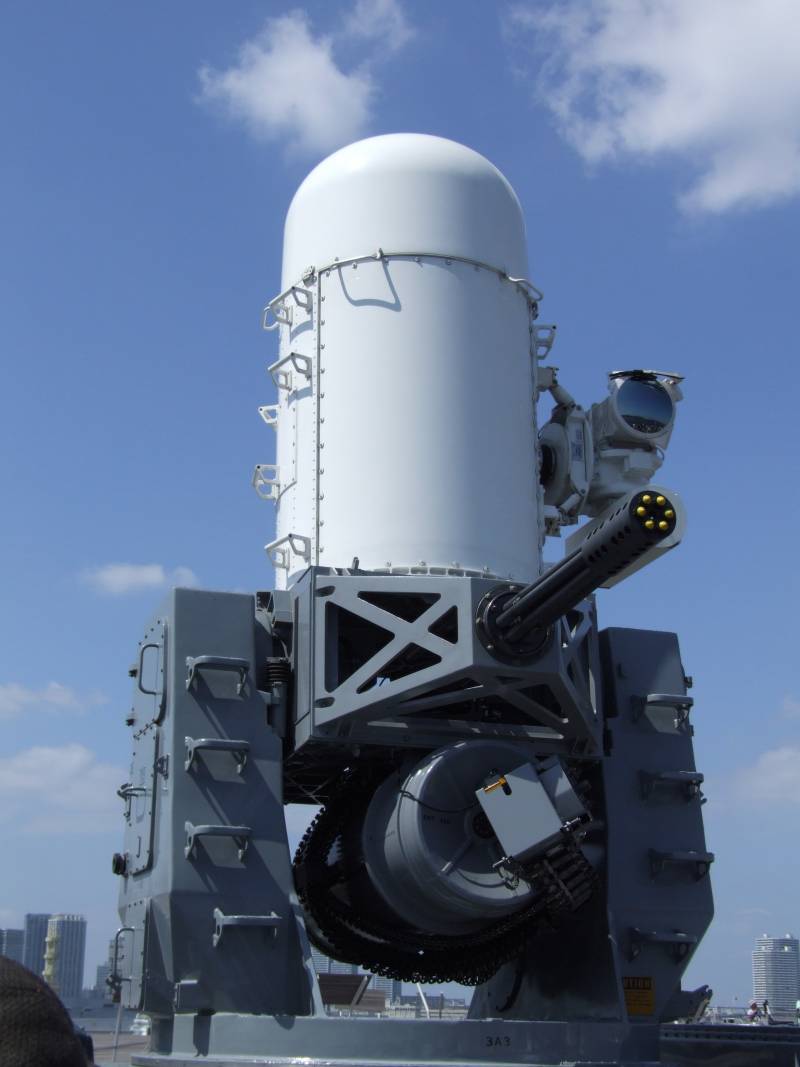
The effectiveness of the ZAK against modern anti-ship missiles is often called into question. Source wikipedia.org
The above does not mean the need to abandon the ZAK, but suggests that both the SAM and the ZAK can be supplemented by other means of short-range self-defense - complexes of active protection of surface ships (KAZ-NK). At the same time, air defense systems of various ranges, ZAK and KAZ-NK will form a single echeloned air defense of surface ships.
Expediency
Does it make sense to shoot down anti-ship missiles near the ship, at a distance of about 200-500-1000 meters?
The warheads (warheads) of anti-ship missiles are often capable of withstanding serious damage and can reach the ship even after the anti-ship missiles have received significant damage. And even if the anti-ship missile system is destroyed, its fragments can pose a significant threat to the ship.
Let's rank the threats arising from an anti-ship missile attack:
- direct hit by anti-ship missiles and programmed detonation of its warhead at the optimum point inside the ship's hull;
- direct hit by anti-ship missiles and unplanned detonation of its warhead at a random point inside the ship's hull;
- direct hit of anti-ship missiles into the ship's hull without detonating its warhead;
- detonation of the anti-ship missile warhead away from the ship and most of the fragments hitting the ship;
- detonation of an anti-ship missile warhead away from the ship and a small part of the fragments hitting the ship;
- complete destruction or significant deviation of the anti-ship missile system, or its fragments, from the ship, with minimal or no penetration into the ship's hull.
Each upstream scenario will be much worse for NK than the downstream one.
In addition, it was the Soviet Union that built monstrous supersonic anti-ship missiles, which, probably, without the explosion of a warhead, could sink many types of enemy ships. In the countries of the West / NATO bloc, they often create smaller anti-ship missiles, subsonic ones, but they can be used in large quantities in order to be able to oversaturate the air defense of surface ships. But such anti-ship missiles will also inflict much less damage to the ship, especially if they are completely or partially destroyed on approach. Yes, and it is easier to destroy small-sized subsonic anti-ship missiles.
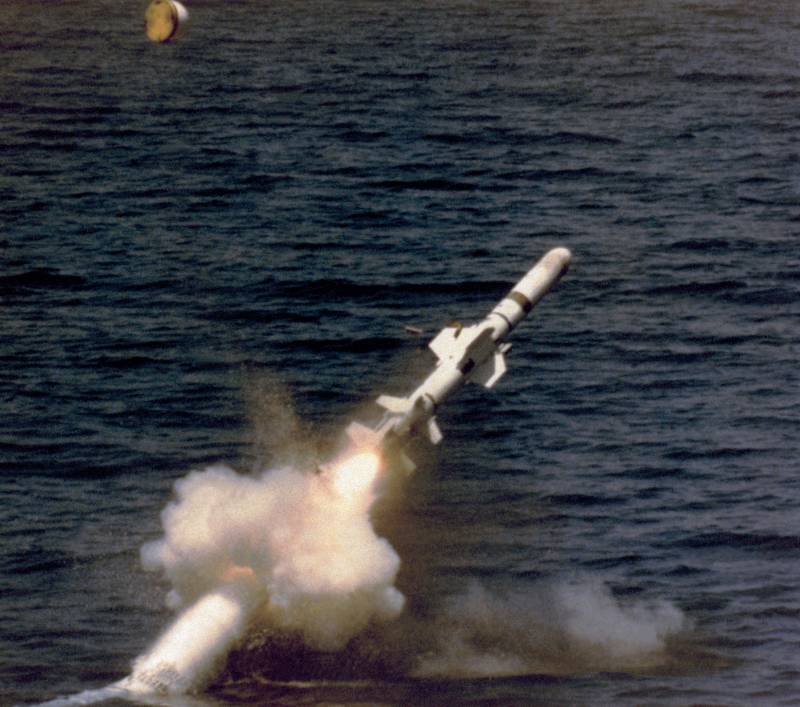
Western anti-ship missiles are most often small in size, but can be massively used, in the first place aviation... Source wikipedia.org
On the other hand, if the use of KAZ-NK will radically reduce the likelihood of hitting anti-ship missiles ships, but the risk of damage to them by anti-ship missile shrapnel / fragments increases, then this will become an incentive to strengthen the NK design in order to protect it from this threat.
Advantages
The defeat of anti-ship missiles at an ultra-close distance requires the highest reaction speed from the KAZ-NK, but, as we already said in the article about the KAZ-air defense, such a reaction is fully provided by modern KAZ designed to protect armored vehicles. Moreover, it is believed that some KAZ for the protection of armored vehicles can intercept even armor-piercing feathered sub-caliber projectiles (BOPS), flying at a speed of about 1200-1700 meters per second.
At the same time, most of the anti-ship missiles of a potential enemy are subsonic. Supersonic, and even more so hypersonic, anti-ship missiles in an enemy salvo will be much smaller due to their large dimensions. Any carrier: air, surface or underwater, will take either less supersonic anti-ship missiles than subsonic ones, or they will have a shorter flight range. In addition, it is much more difficult to ensure their flight at an ultra-low altitude, which means that they can be destroyed by existing air defense systems at the maximum detection range. Accordingly, the main targets for KAZ-NK will be subsonic (less often supersonic) low-flying anti-ship missiles.
At the same time, protection at the minimum range has its advantages.
Firstly, in the final segment, the anti-ship missile system practically cannot maneuver - the closer to the target, the more predictable its trajectory.
Secondly, the closer the anti-ship missile system is to the radar and optoelectronic reconnaissance means of the KAZ-NK, the less effective the enemy's electronic warfare (EW) means and the means of reducing the visibility of the anti-ship missile itself will be.
Thirdly, taking into account the minimum firing range, weather conditions will have a minimal effect on the KAZ-NK reconnaissance means.
Thus, KAZ-NK is almost guaranteed to be able to detect approaching anti-ship missiles and will have a sufficient reaction rate to intercept subsonic and supersonic anti-ship missiles.
Design
Since there are surface ships of various displacement, several versions of KAZ-NK of different dimensions will be required.
Do not forget that ships can be attacked by both anti-ship missiles and other weapons of the "air-to-surface" or "surface-to-surface" class, for example, anti-radar missiles (PRR), anti-tank guided missiles (ATGM) or even anti-aircraft guided missiles (SAM) with the possibility of hitting surface targets.
First of all, KAZ-NK will be distinguished by a larger dimension of launchers (PU) and barrels / guides necessary for placing ammunition capable of destroying or damaging anti-ship missiles. Accordingly, in order for the mass and size characteristics of the KAZ-NK to make it possible to place it on the NK, the number of barrels in the launcher will be limited in comparison with the KAZ-PVO, which is designed primarily for the destruction of the cheapest and most massive means of destruction, such as small-sized unmanned aerial vehicles (UAVs). guided gliding bombs, small-sized high-precision missiles, etc.
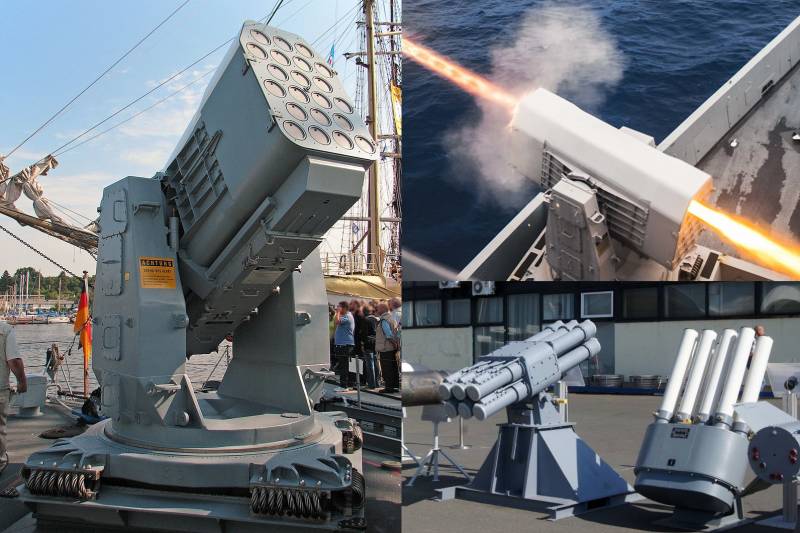
The dimensions of the KAZ-NK will presumably be comparable to the dimensions of the short-range self-defense air defense system or the complexes for setting up protective curtains. Source wikipedia.org, bastion-karpenko.ru
What type of ammunition will be most effective against anti-ship missiles?
It's hard to say, the answer to this can only be given by calculations and practical tests.
Presumably, three main types of ammunition can be used in KAZ-NK - shrapnel type with ready-made striking elements, shrapnel type with ready-made striking elements in a container (opening after a certain period of time after exiting the barrel) and high-explosive fragmentation ammunition with programmed detonation on the trajectory. Depending on the type of anti-ship missile attacking the ship, it can be hit by one or more types of KAZ-NK ammunition.
In addition to the functions of anti-aircraft / anti-missile defense of surface ships, KAZ-NK can also perform anti-sabotage and counter-terrorism functions - it is easy to imagine what a powerful shrapnel charge would do with a high-speed motor boat filled with explosives.
Options and placement
The KAZ-NK version for small surface ships will be almost identical to the KAZ-PVO, taking into account the previously mentioned increase in the size of the launchers / barrels, that is, it will provide all-round defense of the surface ship (taking into account the restrictions imposed by the ship's structural elements).
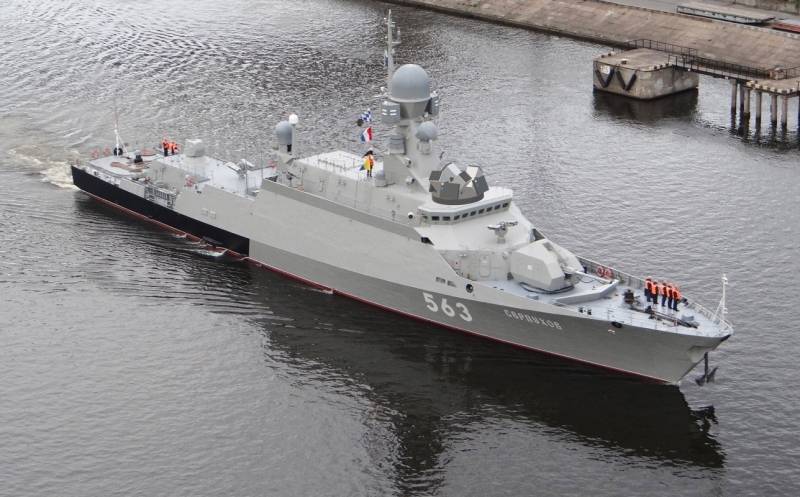
Option of placing KAZ-NK on a small missile ship (MRK) of the project 21631 "Buyan-M". Source wikipedia.org
It can be assumed that for larger ships, the side-by-side placement of KAZ-NK, carrying out the defense of a given sector, will be the preferred option, while the protected sectors of the KAZ-NK should overlap. A variant is possible when KAZ-NK will be located on one ship, carrying out both sector and circular self-defense of the ship.
Hereinafter, the proposed placement of KAZ-NK does not take into account the hidden design features of the NK and, in fact, may differ significantly.
The presence of several KAZ-air defense systems on board the surface ship will allow hitting the attacking anti-ship missile system simultaneously from several directions, knocking it off the flight path and inflicting maximum damage on it.
There must be a lot of them ...
Countries waging active hostilities on land quickly come to the conclusion that active defense systems should become an integral part of modern armored vehicles, especially those on the front line. Promising KAZ-NK should also become an integral element of surface ships.
A distinctive feature of KAZ-NK from air defense systems of various classes should be cheapness, primarily of ammunition, as well as full automation of combat work.
The more surface ships, including auxiliary ones, will be equipped with KAZ-NK, the more anti-ship missiles will need to be spent by the enemy to destroy them, the more enemy aircraft will have to make sorties, in each of which it can suffer losses. It's one thing to spend a few anti-ship missiles to destroy a supply transport from a P-8 Poseidon flying by, another thing is to organize a full-fledged air raid for this at the expense of half a dozen or a dozen anti-ship missiles.
The presence of KAZ-NK will mean that more anti-ship missiles will need to be added to the ammunition of enemy surface ships, which means that there will be less space in their arsenal for missiles and surface-to-surface cruise missiles. The same applies to submarines: more anti-ship missiles means fewer torpedoes and / or cruise missiles designed to strike at ground targets.
It can be assumed that the most effective KAZ-NK will be in combination with complexes for the installation of protective curtains, which should also not be distinguished by high cost. This measure will increase the protection of auxiliary ships even in the absence of their escort by warships - in many cases, the enemy will simply waste the anti-ship missile ammunition and go home.
Conclusions
The development and widespread use of KAZ-NK will significantly increase the security of Russian surface ships, largely negate the advantage of potential adversaries in the number of combat aircraft, surface ships and submarines, and most importantly, in the effectiveness of reconnaissance and target designation, allowing the enemy to strike first from a safe for his distance.
A significant advantage of KAZ-NK will be the minimum cost of ammunition, incomparable with the cost of attacking anti-ship missiles, which will tilt the cost-effectiveness criterion in favor of the defending side.
It must be repeated once again - in the XNUMXst century, active defense systems will become the most important factor in the survival of military equipment and in achieving superiority in wars and armed conflicts. And surface ships will not be an exception.

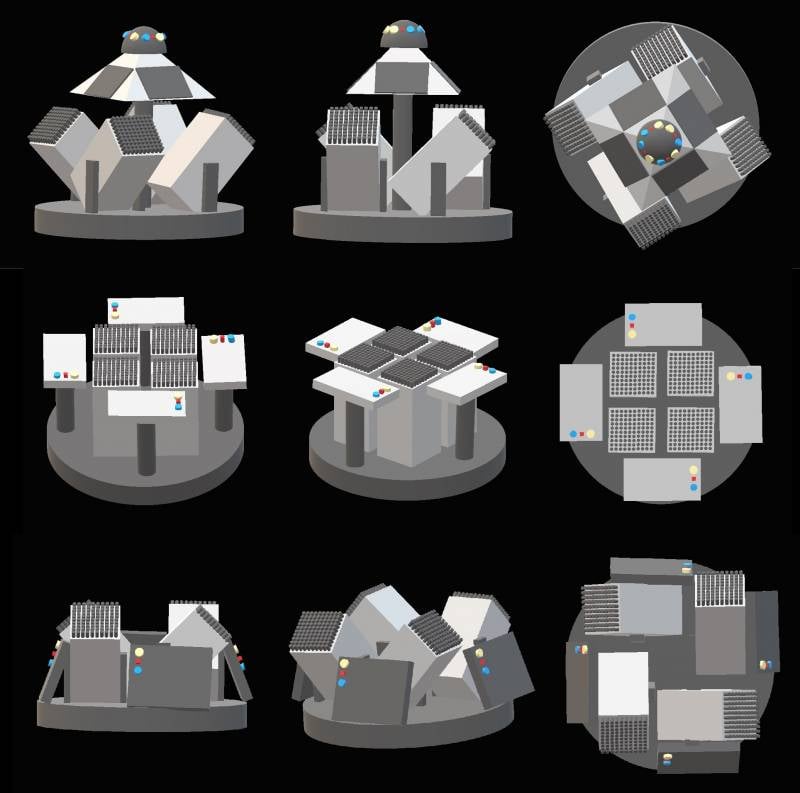
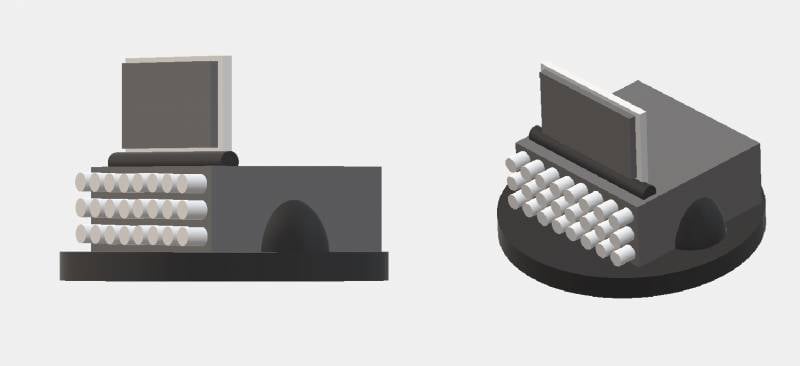


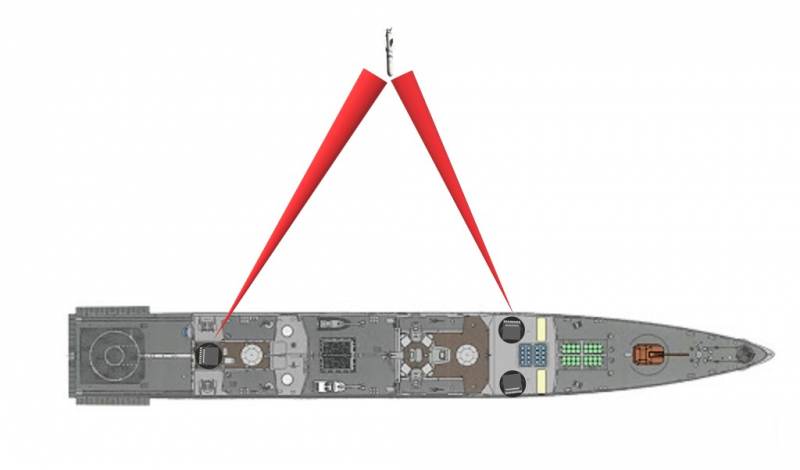
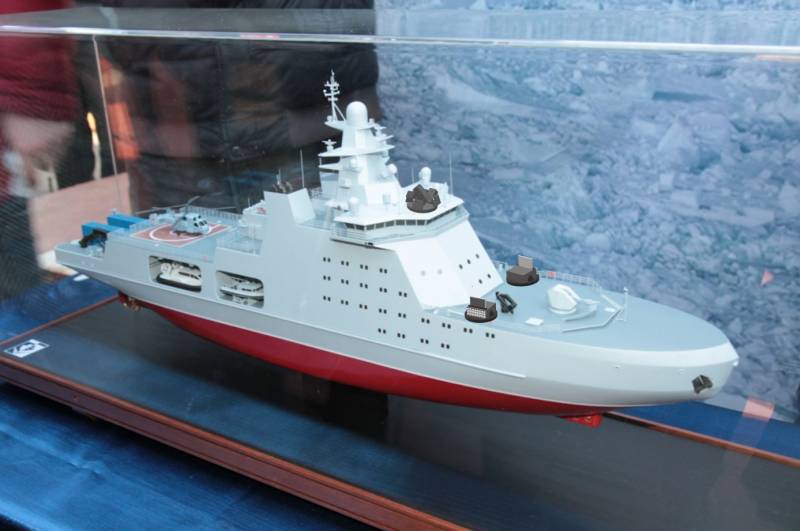
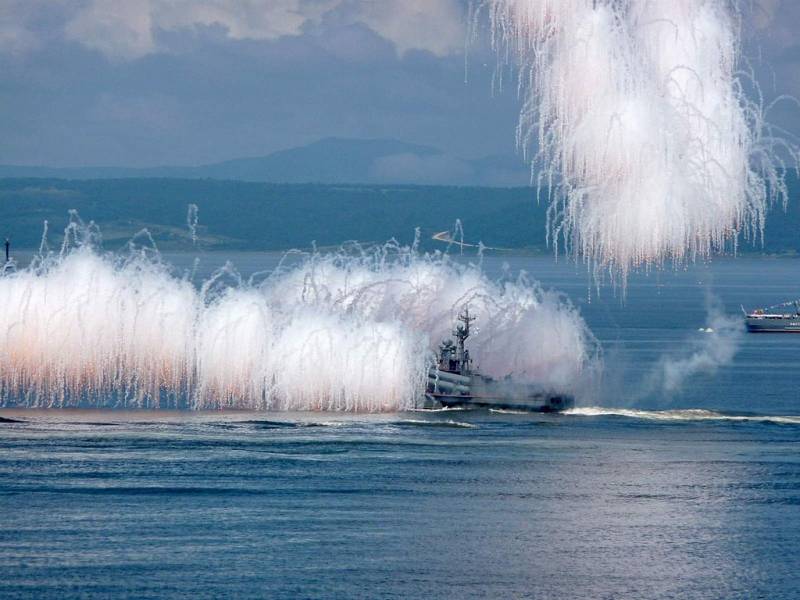
Information